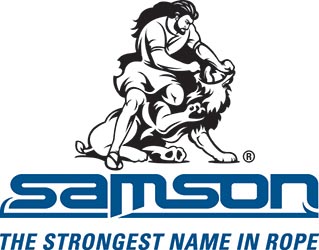MPS Plans for 2009
Posted Jan 09, 2009 by Matt | Tags: news
We had a successful 2008 World Championships of Punkin' Chunkin', despite not meeting any of our goals for 2008: finish 4th and break 1000 feet. Really, these were hand-in-hand, as 1000 feet would have easily taken 4th place, as we figured. We failed, not due to the trebuchet not being as powerful as imagined, but due top a lack of testing. We actually think we have more power than initially imagined. We had originally thought that setting up the trebuchet for the first time in September would only take one to two weekends, but it ended up being more like 4-5 due to machining errors (some design-induced) and other little things that added up time-wise. Still, we lucked out in Delaware and got off 2 solid low-power competition shots. Now to get up to the full power level: 600 pounds of counterweight, which is what we designed for nearly one year ago. With the full counterweight, the arm should now stall correctly thanks to a more favorable mass ratio. In turn, we will be able to use a longer sling, and capture much more of the energy available into the throw.
To get to this point one thing absolutely needs to change: our tracks need to get longer. On every shot we took in Delaware, aside from the first one Friday morning, we hit the front end stops quite hard. This culminated in blowing out the stops three times in our last three shots of 2008, two of them resulting in a total derailment of the carriages. We initially had though that 10 foot tracks would be long enough, and on those shots that hinged correctly, the length was almost enough. However, we really only had about 7.5 feet of travel, as the carriages take over 24" of length themselves, and the end stops take up another 5". Looking at the video of our shots, the center of the counterweight was dropping straight down roughly 15" from the end stops, so any momentum left in the carriages would cause contact with the end stops. And of course there is always going to be at least some momentum, so hence the problem, compounded by us not harnessing all of our energy into the throw to begin with. Thus, we need longer tracks. How much longer is yet to be determined, but we plan to use the software package Working Model 2D to get a good idea. Tentatively we are anticipating adding about 4 feet more of track. We want a safety buffer on our length so that hopefully we will not be hitting the stops at all, or at least not that much or that hard. Ideally we ought to be able to tune the release such that the arm and carriages stop at release and do not move much afterwards. Due to how the frame was built, it should not be too difficult to add length, though we will have to rework the upper and lower horizontal beams.
Really, we want to rework the base beams anyway. They have a total of 44 angle brackets attached to them for holding cross braces and such, but this method only worked on a minimal level. Plus, having the brackets sticking out used up a lot of space for transportation purposes. We are going to look at alternate methods of holding the bases together that do not take up as much space and that are also stiffer. We had a few issues with the frames tipping inward when the carriages were not mounted, which made climbing up the ladders during teardown Sunday night a bit tricky. Further, we want to add another set of ladders to the front of the frame (no towers though) to facilitate mounting/unmounting of the tracks and any other cases where we need to be working up around the tracks at the front of the frame. This will be especially important with a longer frame.
Our tip over bar mechanism also needs some modification. The current bar bent when it buried itself into the ground on our final competition shot, and so needs to be replaced anyway. But we want to make it a bit longer, while leaving the brackets right where they are. This will allow the counterweight to reach the tipping point while the tip of the arm is still slightly downrange of the main axle at this time, unlike the current set-up. This will help to prevent the arm from swinging through too early like occurred on our last few shots in Delaware. That will also help keep the carriages from traveling so far down the tracks and get more energy into the throw. Some reworking of the brackets may be necessary, but we will figure that out. The bar length does not need to grow much, but it should help reliability tremendously. We also plan to open up the tight clearances between the throwing arm and hanger to further help allow things to pivot correctly.
The actuation system needs a total reworking, and we knew this before Delaware. We actually only had one instance of hitting the actuator in Delaware, but the need to yank the actuation bracket out of the way as soon as the arm moved was a pain. The timing of this was also tricky, and pulling too early partially contributed to Saturday night's misfire. We actually pulled the arm tip through, helping prevent the hanger from hinging correctly. We need to rethink this design, and don't have a full concept for correction in mind yet. We are considering some sort of spring-loaded mechanism that will snap out of the way at the proper time, but the issue of the spring pushing the arm is a big one. We also have a few other ideas, and will be evaluating them over the coming weeks.
That covers the major changes we have in mind that will be employed. We also need a new trough, but that is a simple matter. Other things we are considering are intended to simplify and/or speed up operation, or merely strengthening certain parts. In this latter category is a new crossbeam of steel or aluminum to mount the hoist to, as the current one is wood, but only marginally strong enough to support the over 700 pounds of weight it needs to. A metal beam will have a much better safety factor, a must in this case as we do not want to snap that beam. Also, we want to use a metal beam for the bracing between the two lift stages we employ right now for cocking. The wood pieces we used flexed quite a bit, and was a bit worrisome when we had 500 pounds of counterweight on Saturday night. But these are also simple changes. We are also considering putting the hoist cross brace on a pivot so that we do not have to raise and lower the hoist for each shot. Instead it would just rotate out of the way and lock there for the duration of the shot. This should cut the reset time nearly in half, which would be great. Or we may look at a motorized hoisting system, which would mount on the ground and run through a pulley on the cross brace to lift the counterweight. This could really speed up reset time as well.
We have a good list of modifications, but none of them are looking all that tough. The actual implementation of the track/frame extension is already more or less determined, and is pending the actual length needed. The actuation is really the only tricky part, and that should not be too bad either. We plan to work on these modification plans in the next couple months, and then make the changes in late winter/early spring. Rochester Institute of Technology, the college our whole team attends, is holding is second innovation festival (Imagine RIT) in early May, and there are several people in the college hoping that we will exhibit Medieval Postal Service there, and we are looking into it. That had some student air cannons last year, but now it's time to show Rochester a real hurling device! Exhibiting then will allow us to test our modifications early in the year and find any further issues to address over the summer, plus drum up more support and recognition. Who knows, perhaps we can land another sponsor! Then we can build up to take over first place in Delaware some year! We will post updates on our progress as we proceed.









